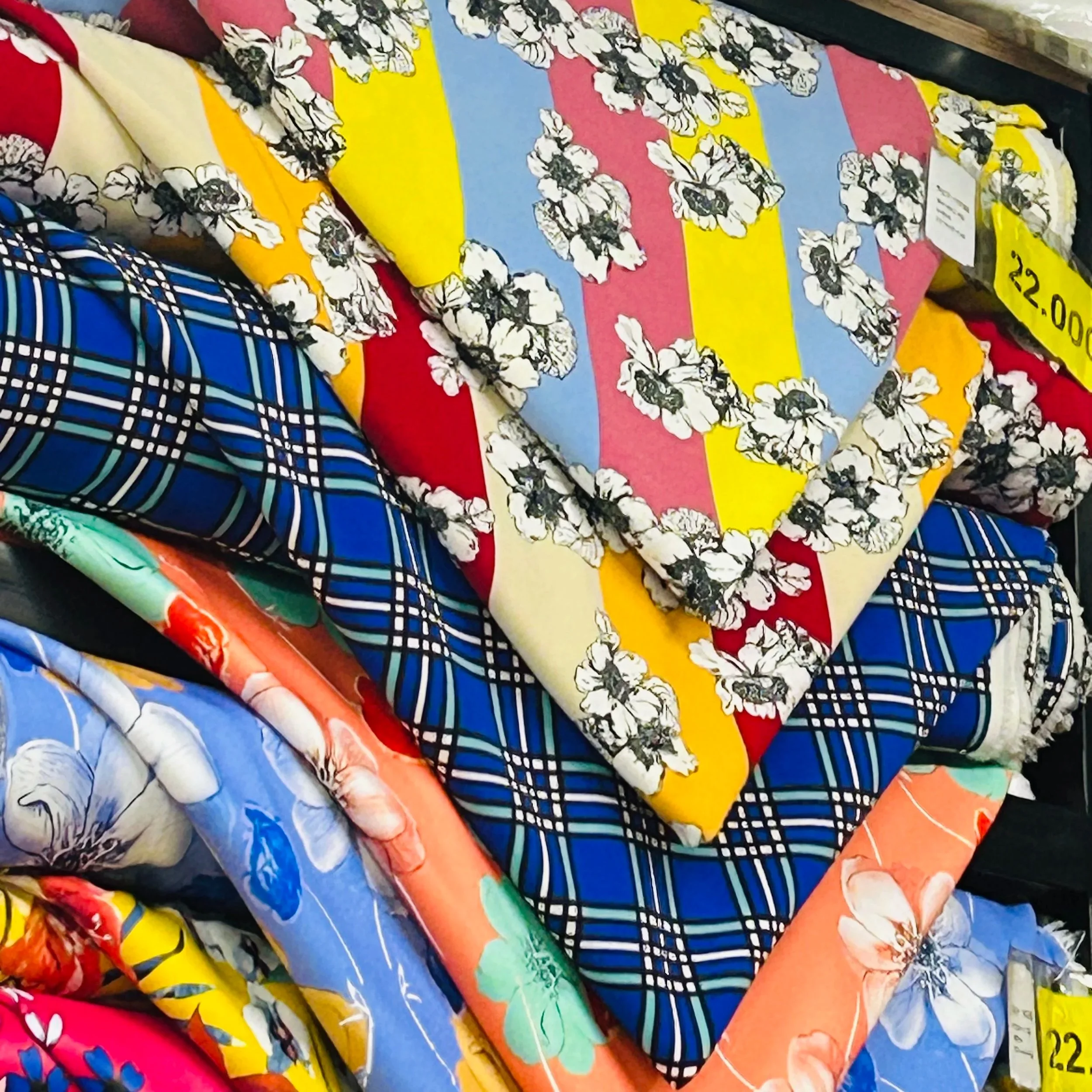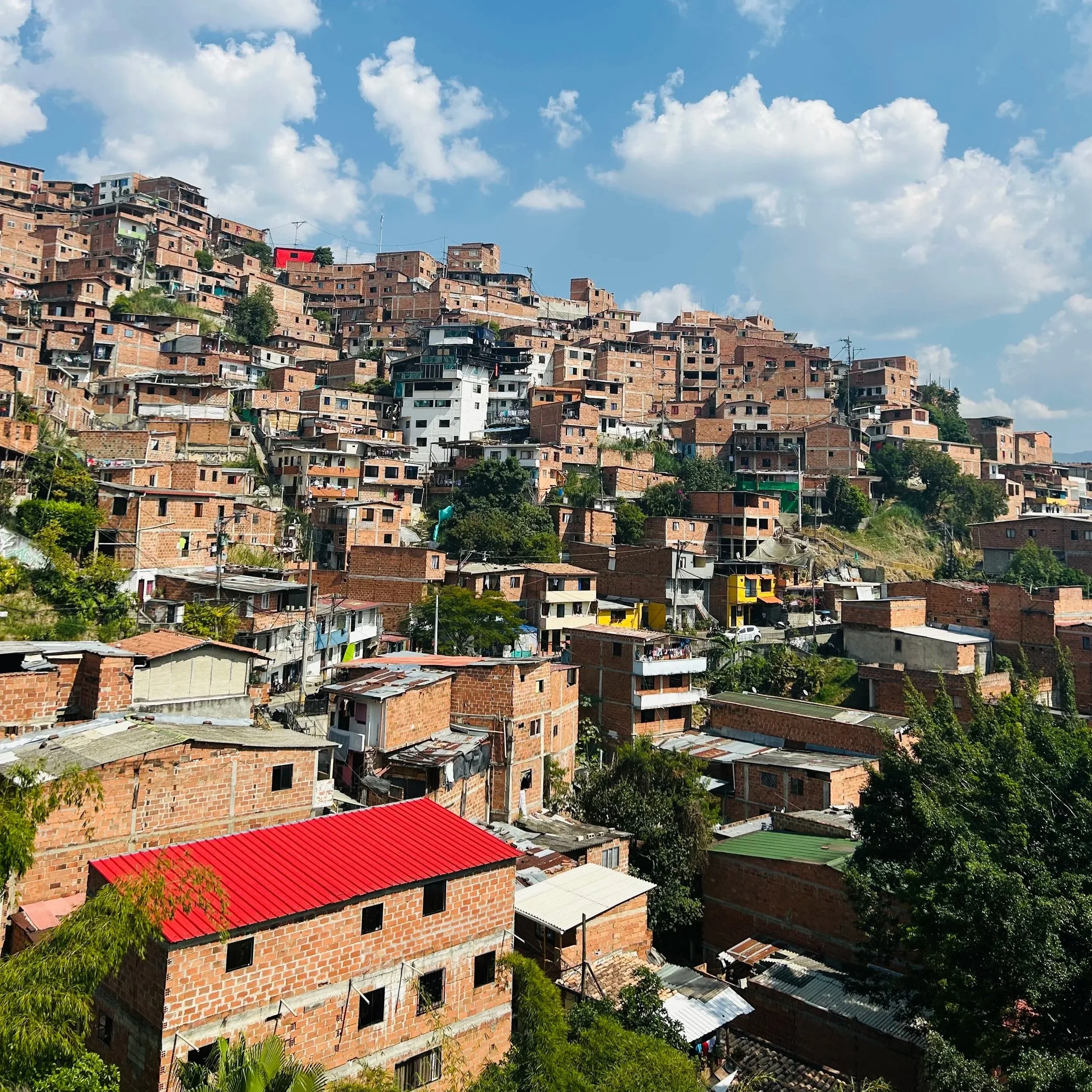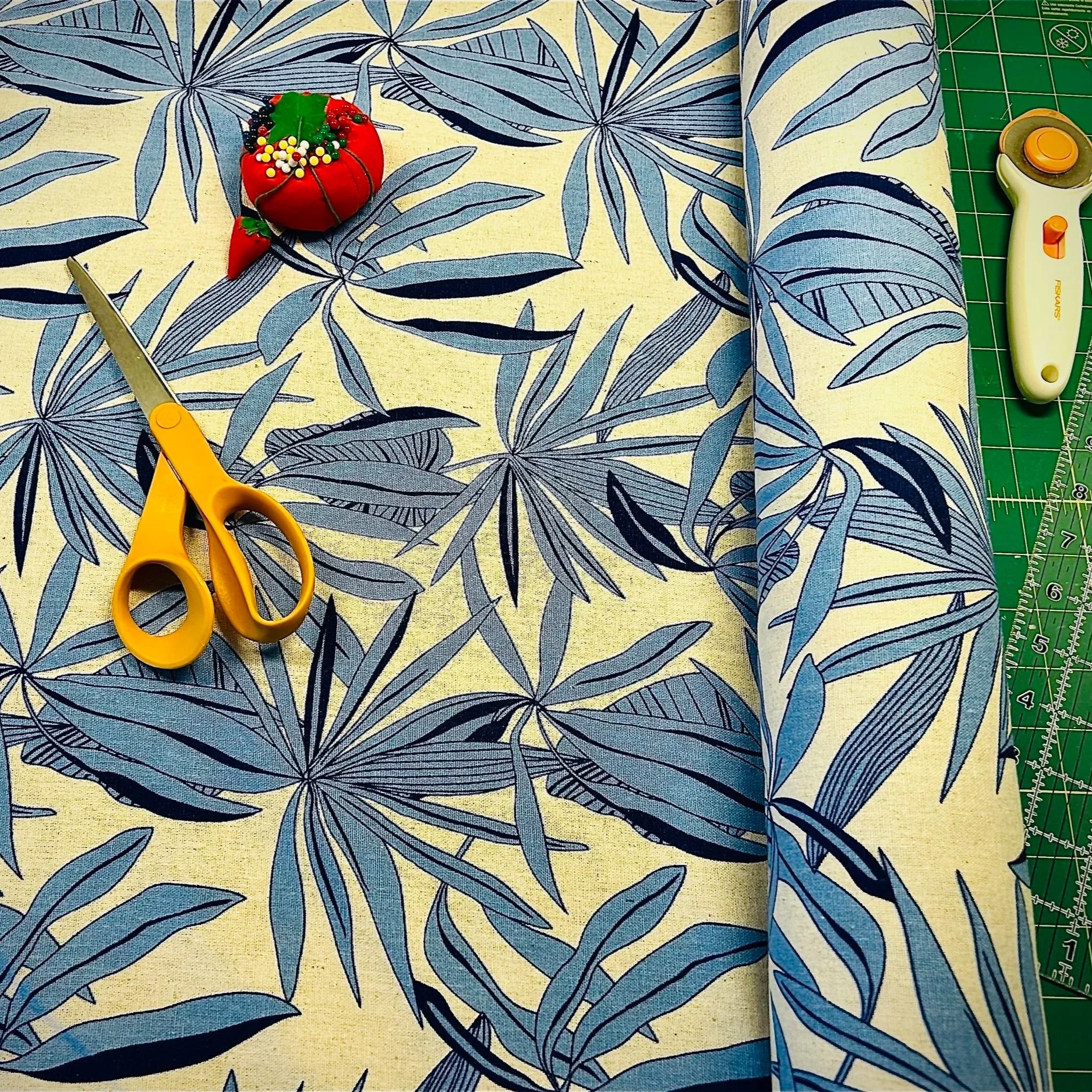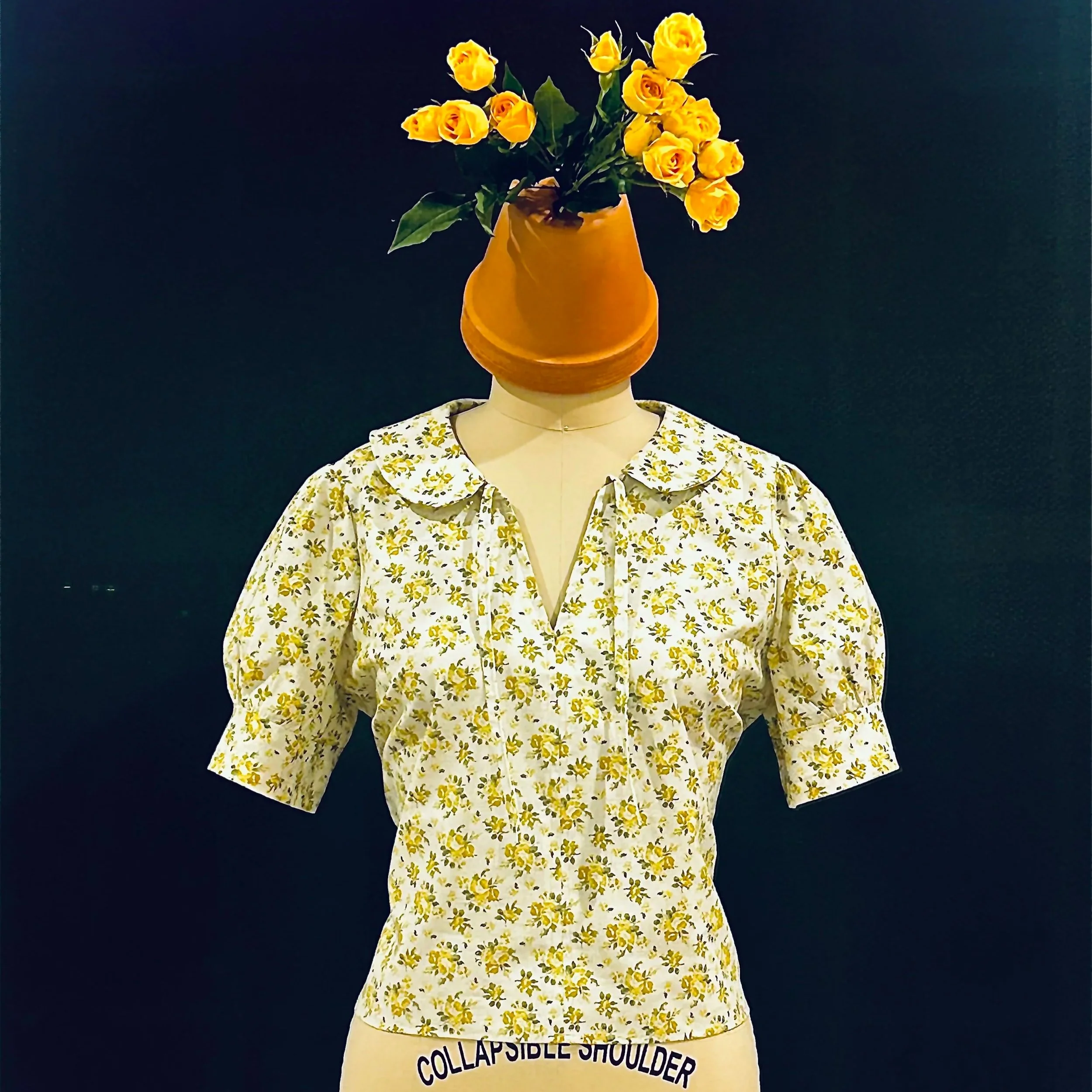Remembering Medellín, Colombia
“What matters in life is not what happens to you but what you remember and how you remember it.”
- Gabriel Garcia Marquez (Gabo)
When I shared my travel plans with friends and colleagues in the United States they exclaimed - “What about the drug trafficking, kidnapping and murders?!”
“Oh my!”
I wasn’t scared. Even the most steadfast naysayers couldn’t break my resolve … or my spiritI I believed that all that stuff was in the past. This would be my first time in Colombia, and I couldn’t wait to indulge in its temperate climate, gastronomy and textile mills.
To prepare for my travels, I always like to pursue a connection to the place I’m visiting. For this particular jaunt, I researched the native birds, looked up some good restaurants, and I mapped out a plan to visit the fabric markets in Medellín.
I thought it would also be nice to read a local author. Since I was traveling with my boyfriend, I bought two copies of Gabo’s, Love in the Time of Cholera, and we formed a private book club. I loved the experience of reading this together! A profound sense of connection was emerging ... with Colombia and moreover, with each other. We spent glorious mornings sipping steamed Arabica beans while pouring over Gabo’s metaphors about the complex, enduring and transformative nature of love.
Arriving in Medellín (“The City of Eternal Spring”) I was immediately taken by its stunning landscape. Nestled in a lush green valley surrounded by mountains, balmy temps greeted us with a warm welcome. A food-lovers’ dream, that first night I shared my giant platter of Bandeja Paisa - filled with hearty ingredients like rice, chicharrón (pork belly), and morcilla (blood sausage), this national dish of Colombia filled my belly. The friendly restaurant staff, who forgave my limited Spanish, filled my soul.
The next morning I woke to the brutal buzzing of my alarm and a velvet black sky. For most people, getting up before dawn would not constitute a vacation. But I’ve always thrived on early mornings. The promise of a new day in an exotic place jolted me with an extra shot of adrenaline as I grabbed a pair of binoculars and perched myself on the balcony. A couple of meditative hours later, my eyes blinking at a strong sun, I decided that it was time to be like an Andean Motmot and shake my tail feathers!
Focused on nature, I resolved to go flower picking. In other words, I went fabric shopping! Mindful living is my mission, and it’s one of the reasons I’ve been crafting a self-made wardrobe. A nature lover, my designs feature playful prints inspired by the environment. With its abundant textile mills dating back to the late 1800s and scenic backdrop, I figured Medellín was the perfect place to source fabric for my next cohesive collection.
Roused by the vivd plumage I’d seen on a Multicolored Tanager that morning, I headed to Textiles El Faisán in Antioquia searching for radiant prints. I have a penchant for orchids (serendipitously they are the national flower of Colombia), but I’m an anthophile and would never turn my back on a vintage rose or an Inírida flower - once considered a “weed” it’s now a symbol of resilience. And If a parrot happened to be resting on a cotton-lawn fabric, I’d regard it as fate (a sign from Gabo), and I’d buy the entire bolt.
The bustling streets downtown were packed with dozens of tiny storefronts, each stocked with an overwhelming selection of fibers piled high. It’s a place for the bold. Shopkeepers are Spanish-speaking and committed to the adage, “look but don’t touch.”
I needed a way around that one! Texture is fundamental to a good garment. Fortunately, my boyfriend showed up for the hunt with his good mood, muscle and most importantly, a giant backpack. Charmed by the “handsome assistant” who happily hauled my loot, the shopkeepers set me free. Like an uncaged bird, I flitted around shop to shop, flapping my arms, pulling down cloth and stuffing the backpack full of sweet flowers, beautiful birds, and precious palm trees.
Thrust back into the chaos of the crowded streets, it was easy to find vendors dishing out gooey Arepas. We devoured two a piece and then hailed a cab.
Back at our digs for the week, I relaxed under a whirring ceiling fan. My mind spinning with design ideas. A vintage sewing machine tempted me from a corner in the flat. But I craved more color and culture, so I signed up for a tour of the largest outdoor urban art gallery in the world.
This next adventure began on the Aurora Cable Car (Metrocable Line J) - a gondola-lift that flew us up 28-steep stories. Soaring high with the hummingbirds, I enjoyed panoramic views of the green valley below.
In no time at all, I was looking down on Quindio wax palms and gazing out into the distance, where tightly stacked brick and cement houses clung to each other and the hillside. That was it - Comuna 13! Stretching out for 7 kilometers, it’s a vibrant district in Medellín, known for its violent past and revitalization through graffiti.
Graffiti exists in a liminal space between criminal act and celebrated form of art. As a forensic psychiatrist, I’ve seen how unsanctioned graffiti (vandalism) can be associated with antisocial personality traits. I’ve also seen it used as a therapeutic tool - wellness programs using graffiti show the potential to reduce stigma and treat mental illness.
In Comuna 13, graffiti has been used as a tool for social reform. The vibe here is electric! Hip-hop music, breakdancing and empanadas served so hot the chorizo sizzled on my tongue. My eyes feasted on intensely hued murals as I bounced along the narrow streets and many stairs characteristic of the barrio.
Thanks to public art works depicting their history of conflict and struggle, Colombians have memories like elephants. In this area, skilled artisans have transformed atrocities of the past into a peaceful and prosperous future.
We paused in front of a brilliant mural of a woman with blue lips. A flower blossomed from her left eye, while her hands folded in prayer. She exuded love from the inside out. Namaste!
“Look closely and you can see a bullet hole piercing through the center of her forehead!” José’s* passion put an exclamation point on every comment - which heightened my sensory explosion.
We met José, our thirty-year old local tour guide under a 40° Celsius sun. With his easy smile and confident swagger, he explained how street art has effectively spurred social reform. In this area, violence juxtaposes peace. It’s a powerful emotional contrast.
José explained that the art, nowhere close to the doodling I’d seen back home on underpasses and train tracks, has been a community effort. Many of the murals were created by the artist John Alexander Serna - known in the neighborhood as “Chota13.”
These are more than pretty paintings. They are stories. And to understand their meaning, it’s important to know about the community’s history.
Once farmland, Comuna 13 was settled by a low socioeconomic group in the 1970s. Back then there was no public transit so residents had to suffer an arduous hike to get in or out of the mountain. With no access to education or jobs, people turned to gangs and drugs for money.
Throughout the 1980s and 1990s gunshots and dead bodies were normalized. Comuna 13 earned the epithets, “The Cradle of Pablo Escobar” and “Murder Capital” of the world. Even after Escobar’s death, the area got infiltrated by guerrilla gangs and paramilitary groups which continued the bloodshed.
“We had enough!” José’s fervor suggested to me that he had lived in Comuna 13 long enough to see battle. Standing tall, he proudly exclaimed, “We took our community back!”
A guided tour of Comuna 13 is definitely not necessary, but I’m sure glad I did it! It’s an opportunity to hear from locals, like José, who have survived the violence, are integral to the transformation, and share a wealth of knowledge about the symbolism behind the artivism.
Despite its growth, poverty is still visible throughout the barrio. But civic pride is palpable.
Curious about the young pioneer of street art, Chota13, I learned that he still lives in the community and promotes positivity. Change is a process, requiring ongoing attention and activism. Mr. Serna might just be a real-life superhero.
I sucked on a pineapple cholado (Colombian snow cone with fruit), pulsing to the background melody, as José explained the metaphors behind each visionary mural.
“Blue paint - Sorrow for the past …”
“Wood faces - Materials used to build the tiny abodes …”
“Mother earth - Rebirth of the community … hope for a sustainable future …”
“Bullet holes - Left on purpose as a reminder of the not so distant past …”
We stopped for a while at an interpretation of Operation Orion, the controversial military offensive carried out on October 16, 2002. The Operation was intended to retake control of the district, but it led to further disappearances, displacement and the killing of civilians. While it did succeed in reducing gang activity, it also left a scar. Murals portraying this event cite the date and use gambling references (cards and dice) to highlight community perspective that the government had callously played with their lives.
I remember how José explained the fallout - “It was the young people … the kids, who took back the district. Them, and the women … their mothers.” José teared up for the first time. “My mother!” The way his voice cracked I supposed that his mother was now with us in spirit.
After Orion, locals waved the white flag. Kids took to the streets and embraced music and art while the women in the community demanded social justice. The State responded and among other things, they focused on infrastructure, which became paramount to improvements in Comuna 13. Thanks to a widespread government initiative spanning eight years, the first escalator, 384-metres-tall, opened in 2011 to the public.
José summed up the significance of the escalators in one word … “Connection!” They joined Comuna 13 to Medellín's urban core and transit system, allowing tourism to flourish and a spirited social hub to emerge. Today, Comuna 13 attracts open-minded and curious visitors from all over the world.
My time in Medellín was stellar! I enjoyed the sun, food, and fashion - plus a surprise. Inspiration.
Back home in Boston, I’m slowly stitching my way through striking Colombian threads. Community spirit reverberates every time I pull a treasure from my stash.
More than textiles, these are sentimental reminders of my time in Medellín’s Comuna 13. An inspirational place, where a community-led initiative traded in guns for aerosol cans - transforming violence into peace.
In addition to the colors, exhilaration and fellowship I experienced, what I remember most about my time in Medellín is the resilience of a region and its people. I like to think that Gabo would be proud.
* name changed to respect privacy












